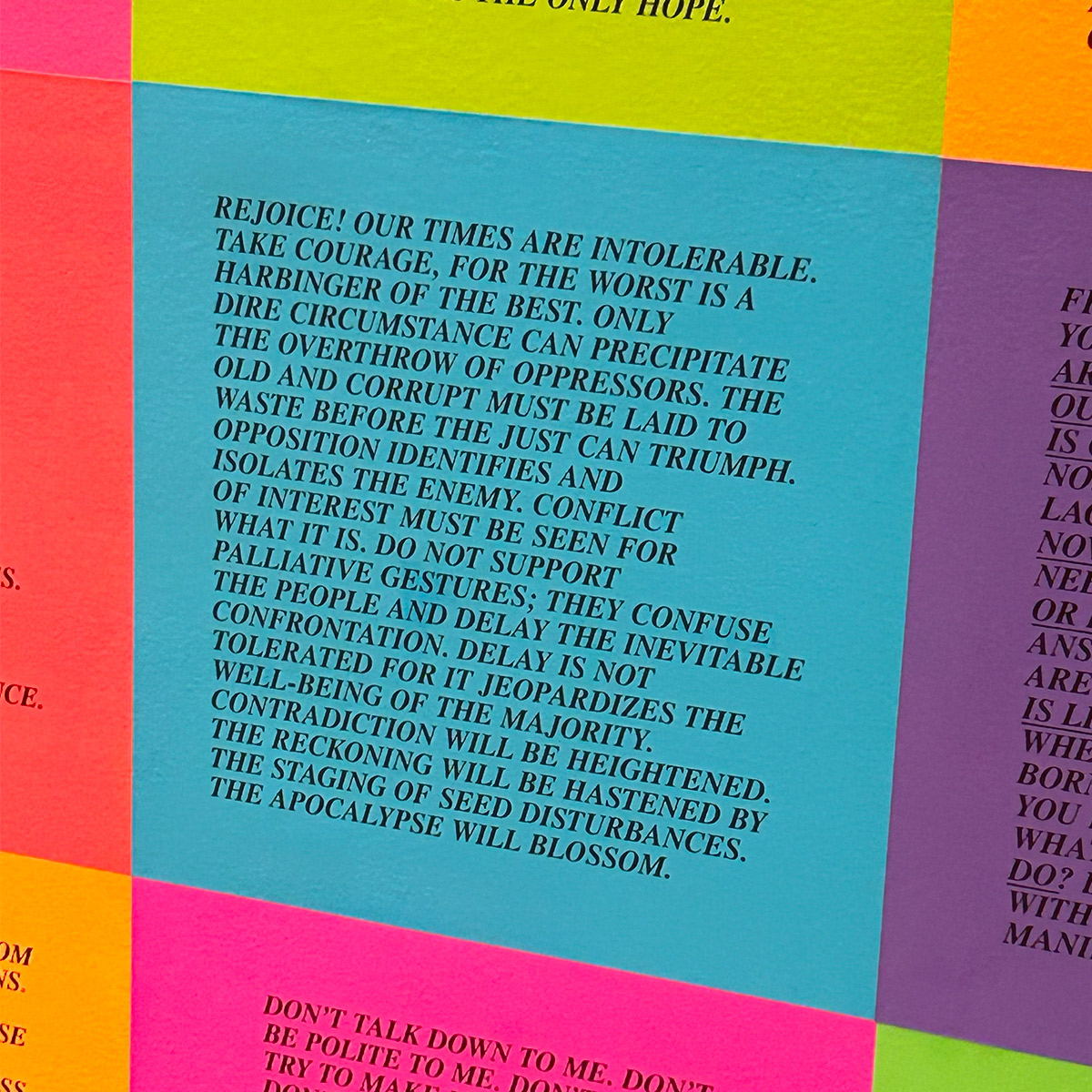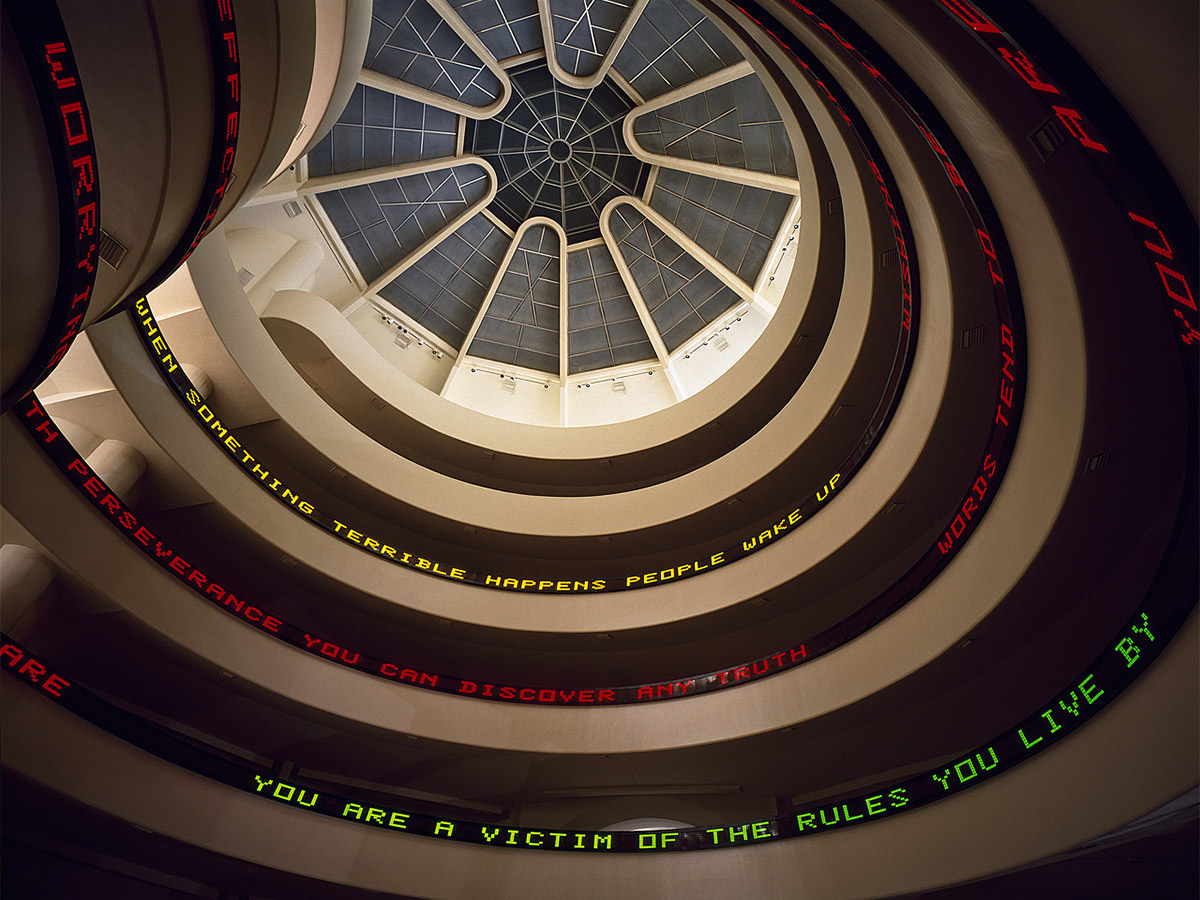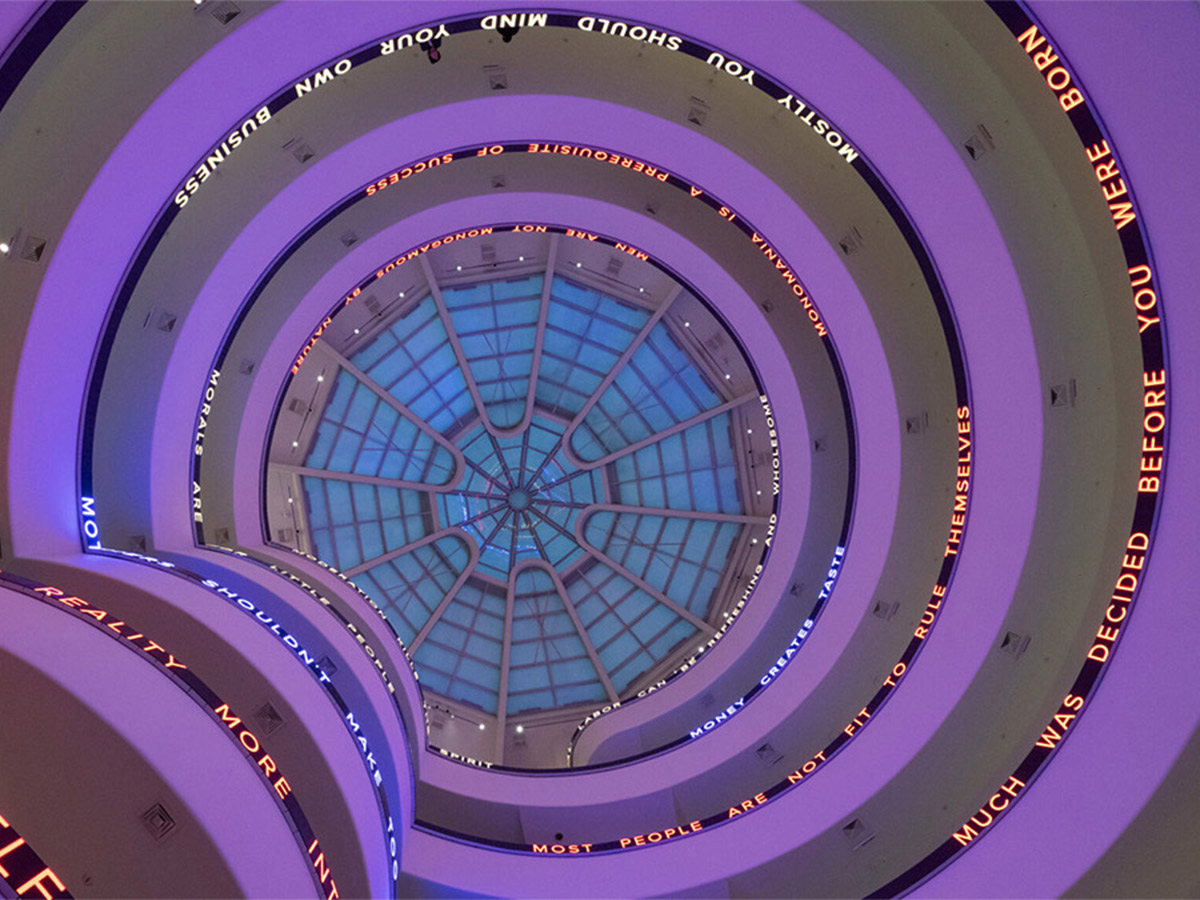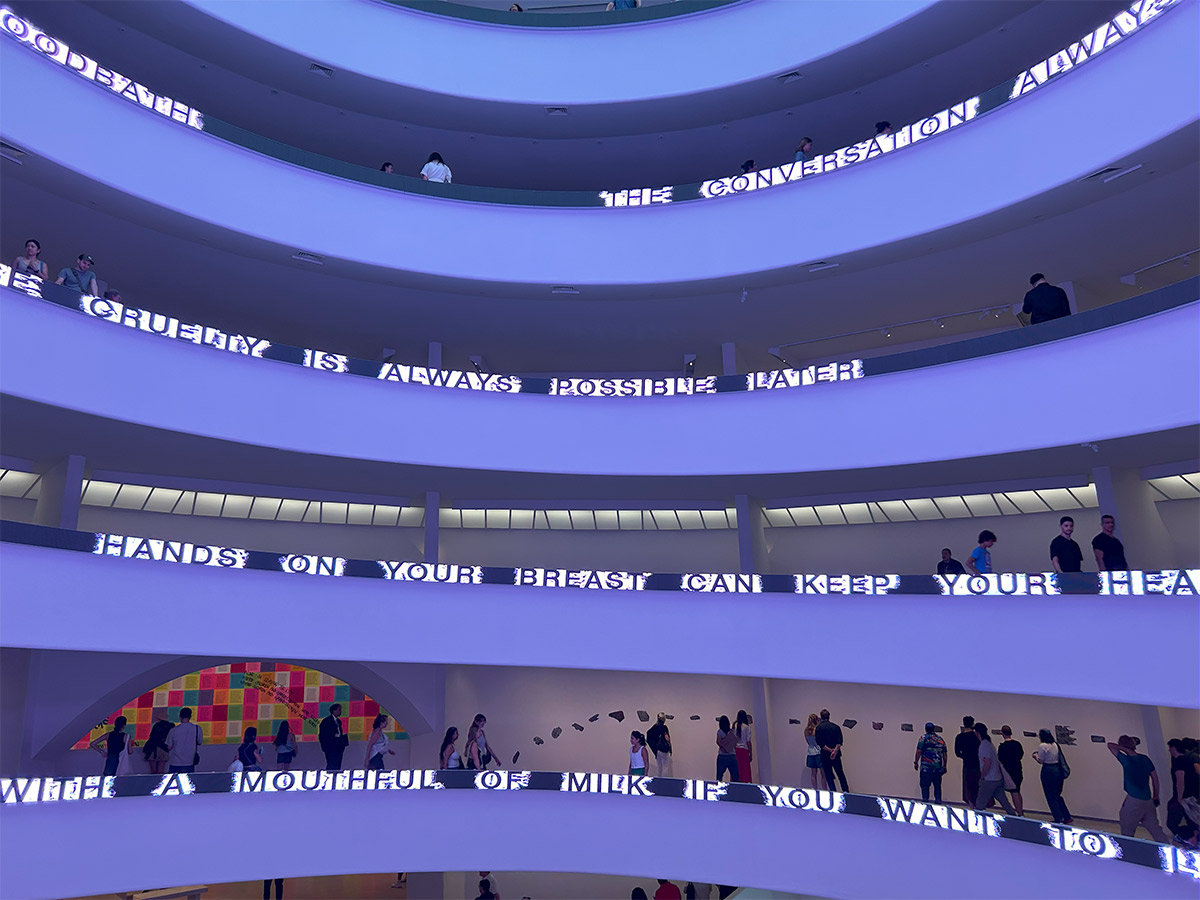Jenny Holzer: Light Line
Solomon R. Guggenheim Museum
May 17–September 29, 2024
On display now at the Guggenheim in New York is Jenny Holzer: Light Line, a reimagining of Holzer’s 1989 landmark art piece created for the museum. Previously, the spiraling LED sign was the longest in the world. Now, it’s still considered a masterpiece of text-based art, with changing colors, fonts, and special effects—this time the effects are AI-generated.
Jenny Holzer has had her severe and incisive ideas presented both in public places and by international exhibits for over forty years. Her medium is writing, though she frequently changes the forms in which it appears. She started in the 1970s with posters placed on the streets of New York City and has expanded into T-shirts, plaques, stone benches, and electronic signs. Her writings express her joys, sorrows, and arguments, and her practice challenges ignorance and violence with humor, kindness, and courage.

The entire museum is part of Holzer’s installation, climbing all six stories of the rotunda to the oculus. More pieces are strewn throughout: benches with her writings carved into them, signs in outside planter boxes, and even a piece in a bathroom. Holzer wants the unassuming locations of the art to grant them power—when viewers are surprised by the art, she believes the art can affect them more.
Holzer’s one-liners come from her Truisms and other collections of her writing. They are slogans and aphorisms, and often inflammatory. Sayings like “MOST PEOPLE ARE NOT FIT TO RULE THEMSELVES,” “YOU ARE A VICTIM OF THE RULES YOU LIVE BY,” and “MONEY CREATES TASTE” invite discourse and beg to be challenged. Holzer wants her art to be challenged in these ways—if not actually disagreed with and entirely disavowed by its audiences.
Tucked onto the third floor of the rotunda is a keyhole-shaped doorway. Through it lies the museum’s reading room, which holds a recording of Holzer discussing the 1989 exhibition and snippets of video from its installation and opening night. Audiences were delighted and horrified. Some were defensive and felt called out by the writings. Others were vindicated in their judgments of others that they felt the writings denounced. A woman in bohemian dress said she believed the sayings were pointedly anti-bourgeois, in her words, like those people in furs. The next shot was of three young women wearing mink and ermine who said they were abstract artists and felt that the sayings were for people like them: creatives. In clips discussing the opening night, Holzer laughed and said she wanted the writings to make people question their beliefs and their assumptions of the world around them.

Standing against fascism and totalitarianism are themes in Holzer’s works: she is greatly interested in the presentation of information, and how method and manner can change how people interpret things shown to them. Her sayings are declarative, her medium bold and irrefutable. In the 20th century, LED signs had not yet become the norm for advertising. The signs seemed futuristic, almost magical in their technological luminance. Today advances in technology have made such digital presentations of information and fiction commonplace, yet the swirling sentences of Holzer do not lose any of their strange power. Just as in 1989, museum-goers can be heard sounding out the words on the screen to piece together the saying. Outbursts of “Oh, I liked that,” and just as frequently “No! No way, that’s not true” ring out across the museum. By presenting her own words in this decisive manner, Jenny Holzer invites her audience to question the truth of “information” presented to them by other forces. It is easy for arguments to be struck up about her words because some people see them as truth or view them as lies. How much of our beliefs would we think of on our own if they weren’t presented to us as facts by our community, our society, or our government?

Light Line is undeniably political, and the effect is increased by other pieces in the museum. Curator Lauren Hinkson placed more of Holzer’s pieces along the rotunda. These works are from a series created from released government documents. These documents have come to define the U.S. Military’s global engagement. Some of the text is redacted, yet the message of each document is easily understandable with the words etched on the large metal sheets.
The walk up to the oculus thus provides a two-fold experience. Out to the center, you see Holzer’s statements. They are meant to characterize the world climbing up the rotunda with you. Looking in towards the walls, you are confronted with emails and documents that discuss torture, imprisonment, and the legal definitions and loopholes during times of war that allow the military to perpetuate international violence. Abstract and concrete are brought together with writing in different mediums. They discuss power and violence, they reject ignorance, and implore action.
Jenny Holzer: Light Line is a powerful and upsetting installation, yet also uplifting. As contradictory as its content, the exhibit is moving and masterfully captures the enduring power of language, and the importance of questioning the world around you.



